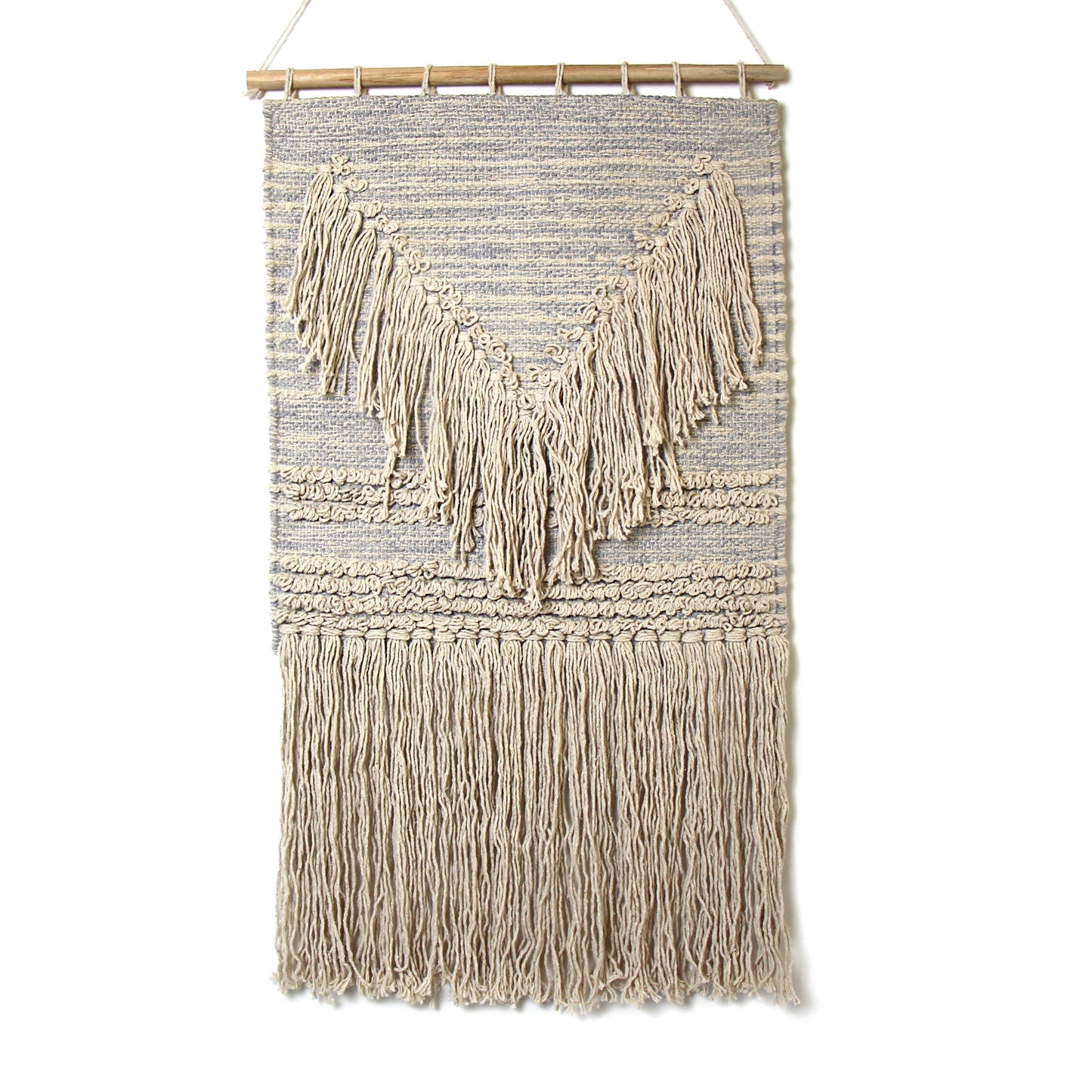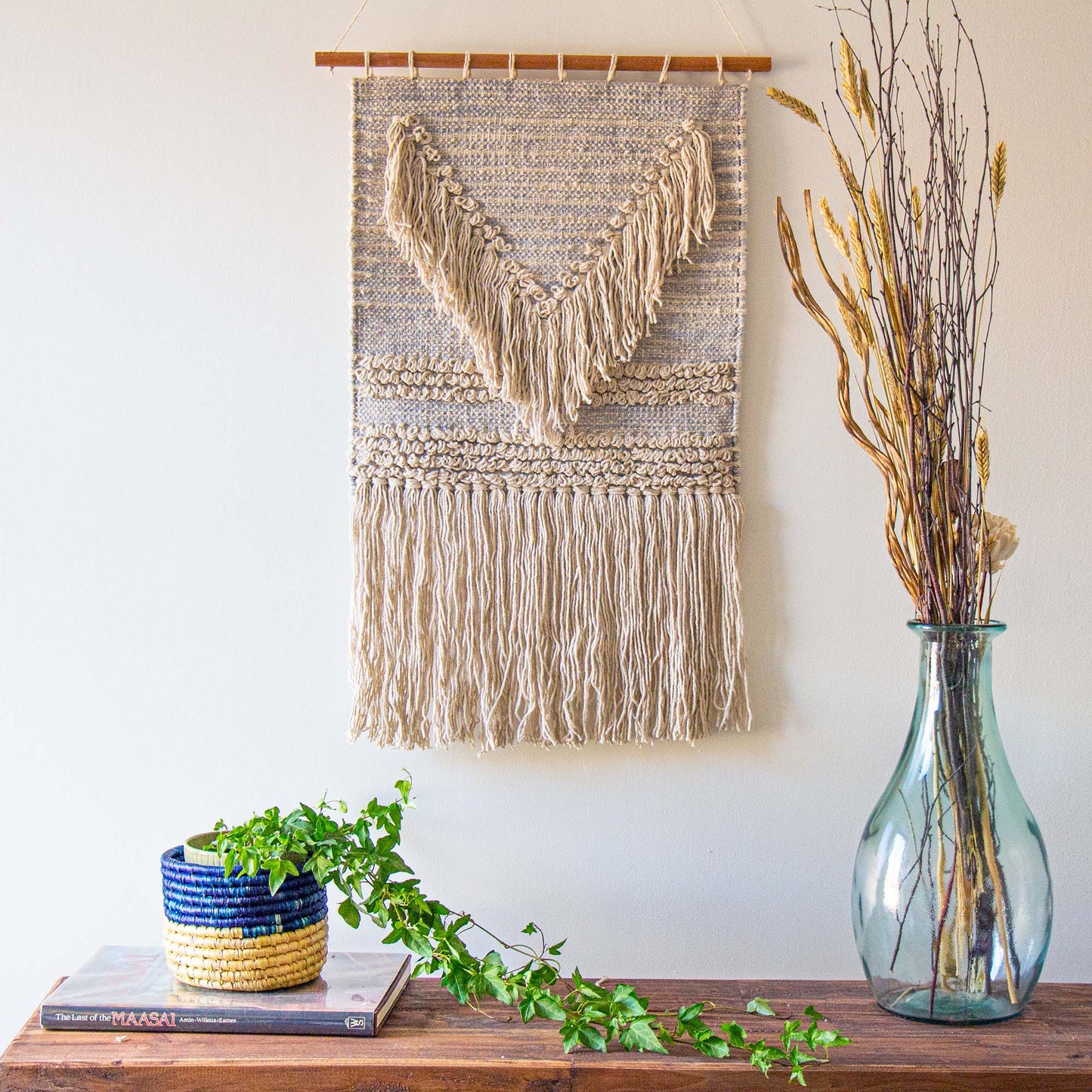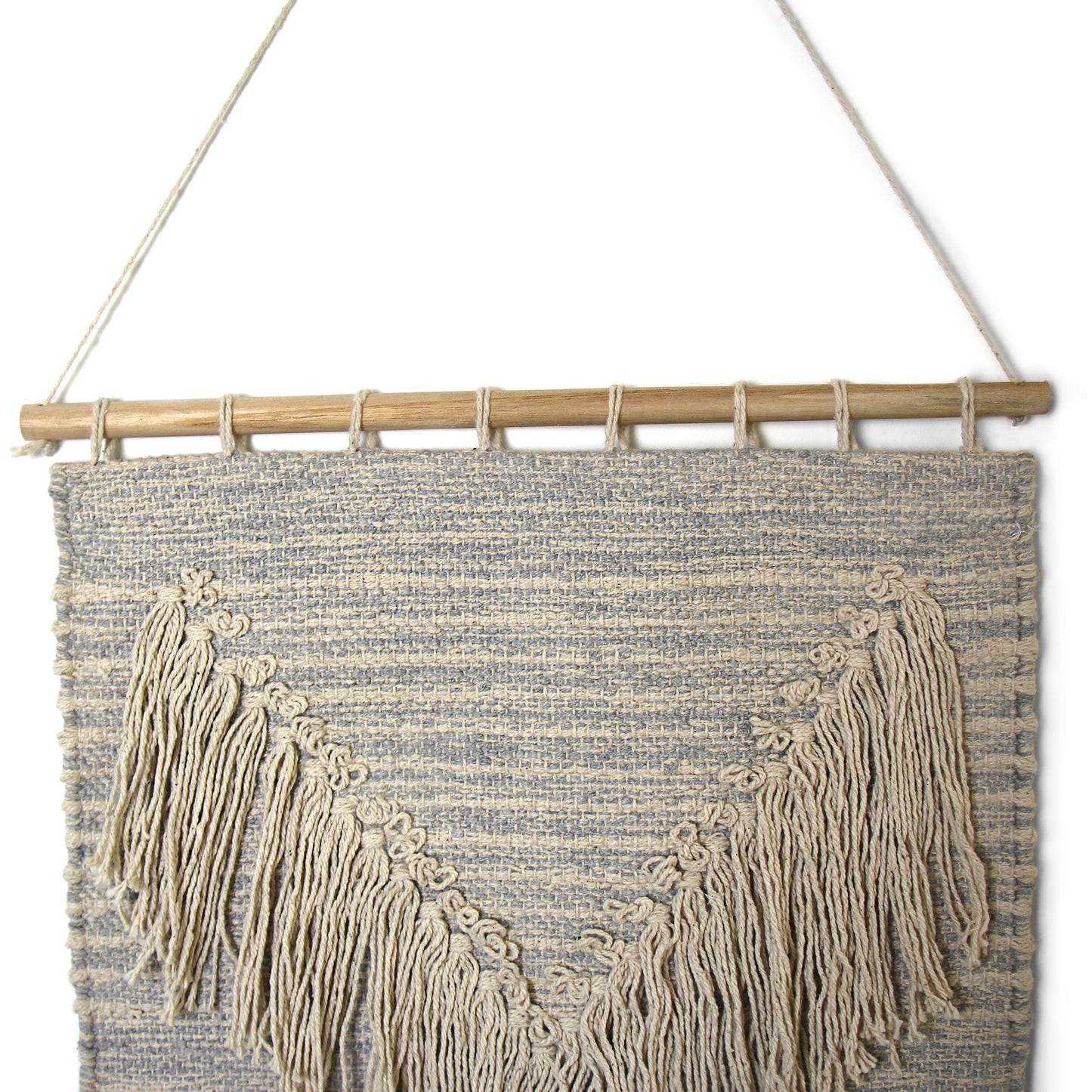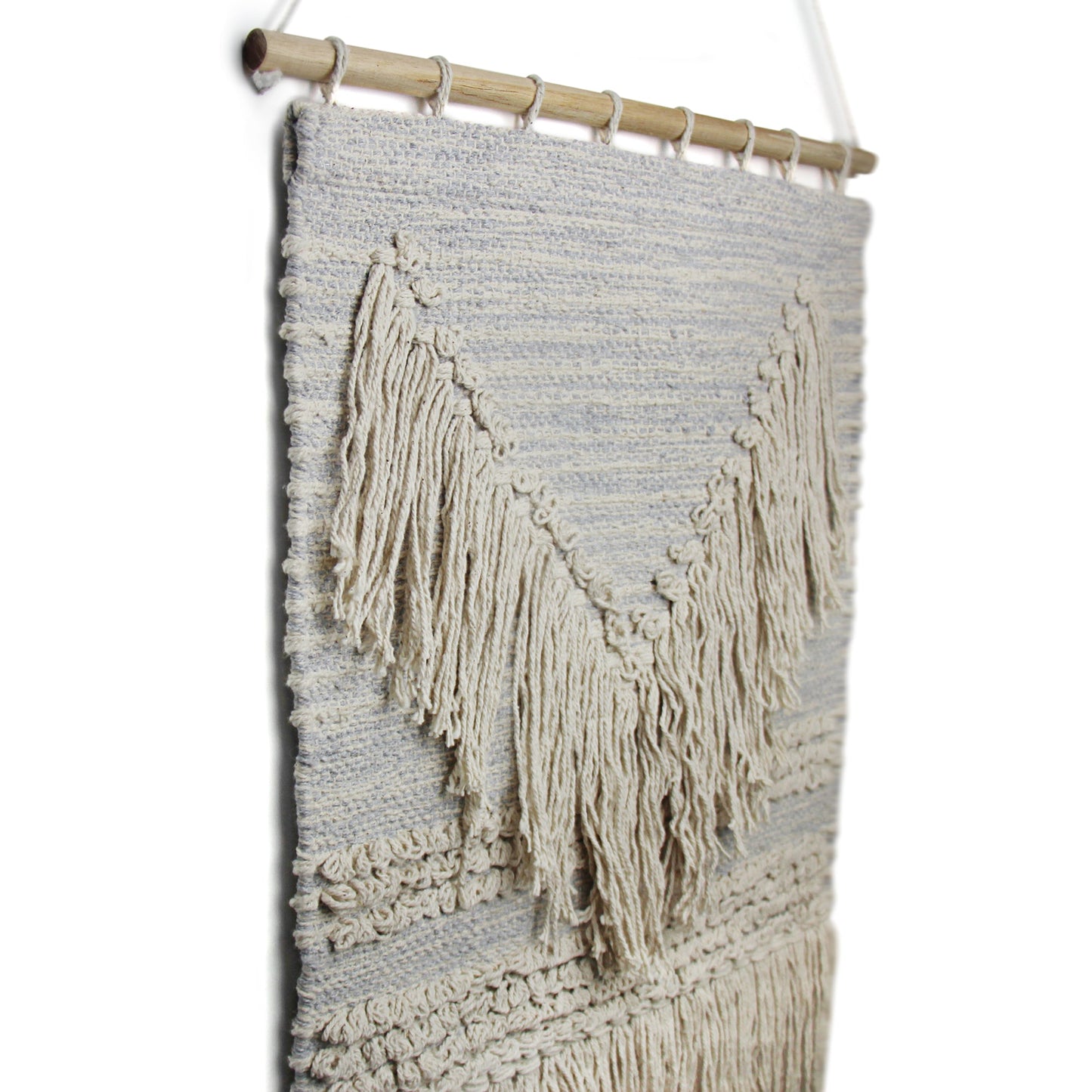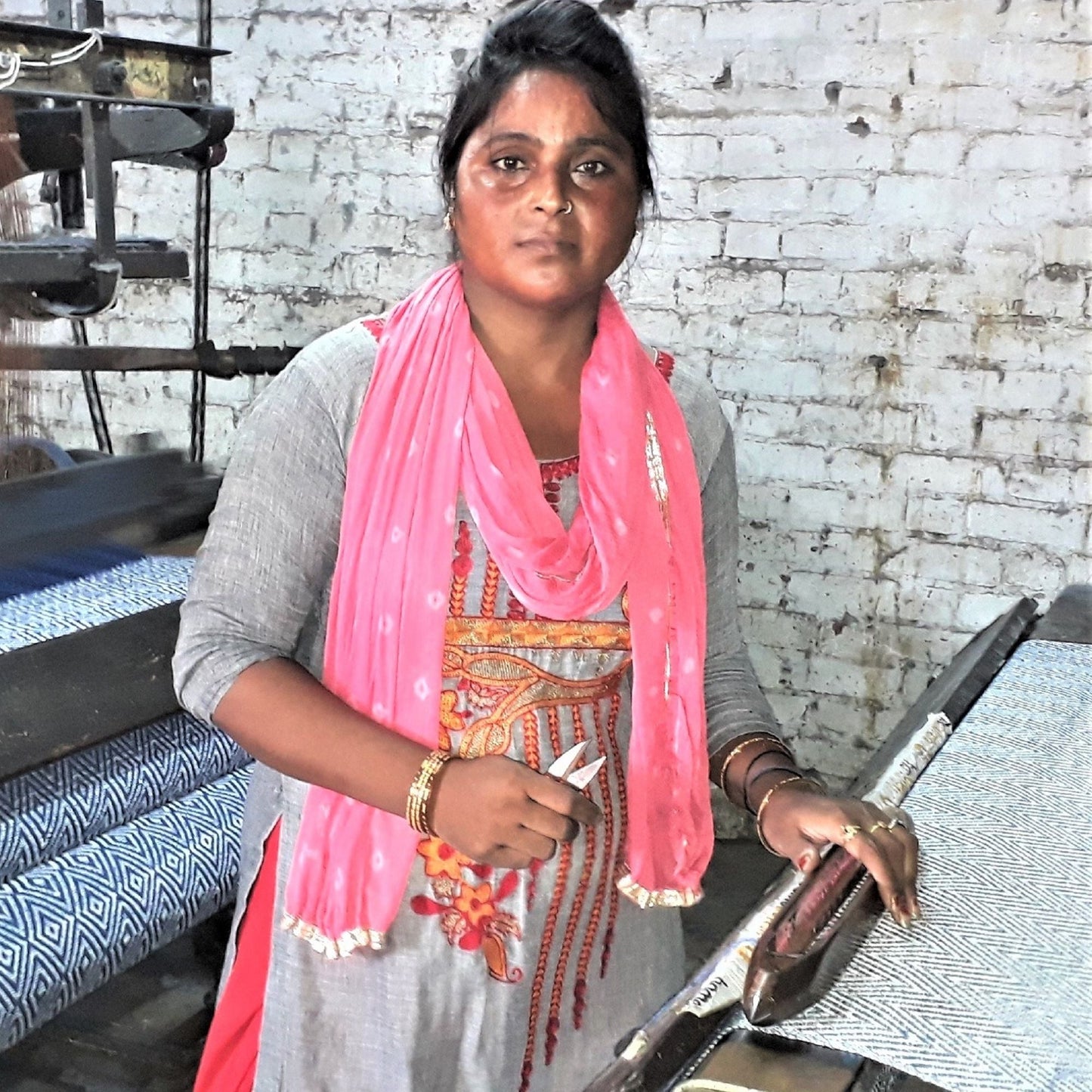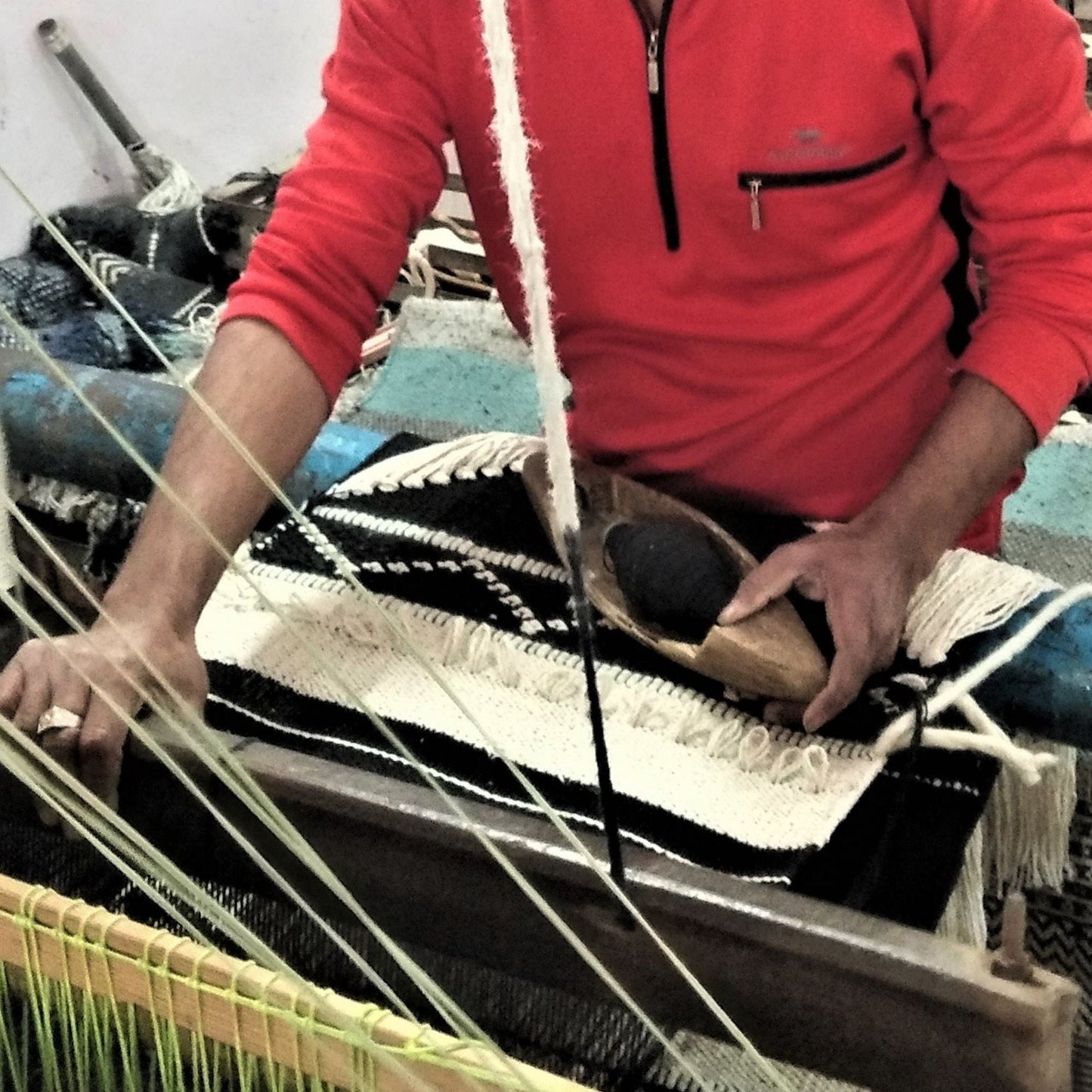Global Crafts
Handwoven Boho Wall Hanging - Blue Grey with Cream Fringe-Fair Trade-Panipat
Handwoven Boho Wall Hanging - Blue Grey with Cream Fringe-Fair Trade-Panipat
Couldn't load pickup availability
This textured bohemian art will warm up and elevate any space in your home. The neutral hues blend beautifully with any decor and add a conversation starter to your space. This piece transports you to a place where handlooms and artistry thrive. The artisans from the Panipat, Haryana region of India have long worked in the textile crafts; each piece of art is lovingly handmade from recycled cotton yarn purchased in local markets and then mill-dyed. The tapestry is woven on a handloom using a foot pedal just as ancient artisans would have done.
Measures 16 inches by 26 inches. Sustainability at its best!
Product Features:
- Type: Wall Art.
- Colors: Blue-Grey, Cream, Salmon, Cactus, Midnight Blue.
- Materials: Cotton, recycled.
- Dimensions: 16 inches by 26 inches.
- Hanging: cotton loop makes hanging easy.
- Recycled, Eco Friendly.
Artisan Highlight:
The weaving production has transformed the lives of both men and women artisans in Panipat. Men work in the workshops, while women work primarily from home. Women artisans have been given fair employment opportunities which has enabled them to put children back in school and provide them with a good education. The artisan group directly employs ten artisans, most of whom are women. When order sizes are larger, they provide work for other women from the village.
Due to the handmade nature, slight variations in size, color, shape, pattern, or other characteristics may be evident. Each piece is truly a unique work of art, lovingly crafted by hand.
Share
About the Artisans
About the Artisans
 Joyeria Semilla meaning Seed Jewelry is a small fair-trade workshop in the Andean town of Villa de Leyva, Colombia. Girasol Taborda, a local artisan and social entrepreneur, started the workshop in the mid-1990s.
Joyeria Semilla meaning Seed Jewelry is a small fair-trade workshop in the Andean town of Villa de Leyva, Colombia. Girasol Taborda, a local artisan and social entrepreneur, started the workshop in the mid-1990s.
Joyeria Semilla’s objective is three-folds; to create new jobs, revive Colombia's handicrafts sector and to motivate locals to better manage their natural resources. The organization works primarily with socially and economically disadvantaged youths, single mothers and people with disabilities in the area. The company offers free training in product design, technical training and marketing to new members. Joyeria Semilla has trained them in the craft of jewelry-making.

Caña Flecha or “Gynerium Sagittatum” is a locally found palm tree in the regions of the Caribbean coast. The leaves from this plant are used for making jewelry, woven hats, bags and baskets. The Zenú Indians were and their descendants inherited the tradition of picking veins of the green palm leaf for weaving. These veins were made into woven hats and other products for their personal use.
The Zenú culture is said to have existed between 200BC to1600AD. With the arrival of the colonizers in the 16th century, the indigenous community declined of unknown reasons. Today a very small population remains that claims the inheritance of the almost extinct Zenú tribe. Known for their skills in the construction of major waterworks, canals and irrigation system along with being skilled goldsmiths, examples of their accomplished craftsmanship are found in various museums around the world. Their larger means of subsistence were hunting, farming, fishing and trading.
Caña Flecha is found in abundance in the region, and hence makes for a sustainable and naturally available raw material for these products. Every bit of the plant is utilized – from using in building walls and roofs in houses to food for cattle and medicinal purposes. It is from the central vein of the leaf that the fibers for weaving are obtained. After the hard surface is peeled off, the fibers are left in the sun to dry and undergo a natural tinting process; these fibers are barely about 1 millimeter in thickness and hence call for a lot of skill and patience to weave with. The dried fibers are then processed for natural coloration - some are boiled with lemon to whiten them and some are treated with mud and boiled with plantain leaves to blacken them. The designs are based on ancient motifs and mathematical representations, which are inspired by the early Zenú culture.
